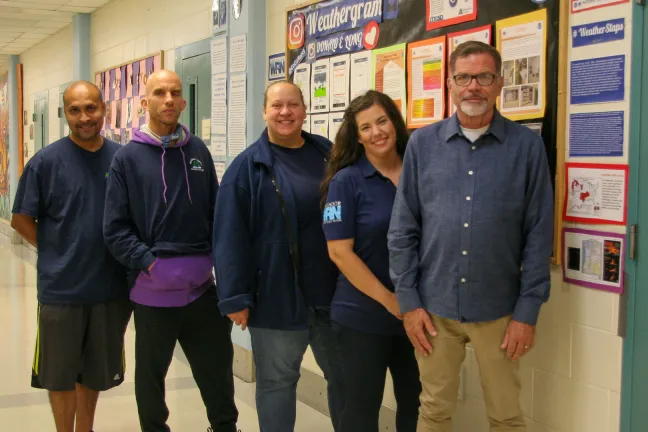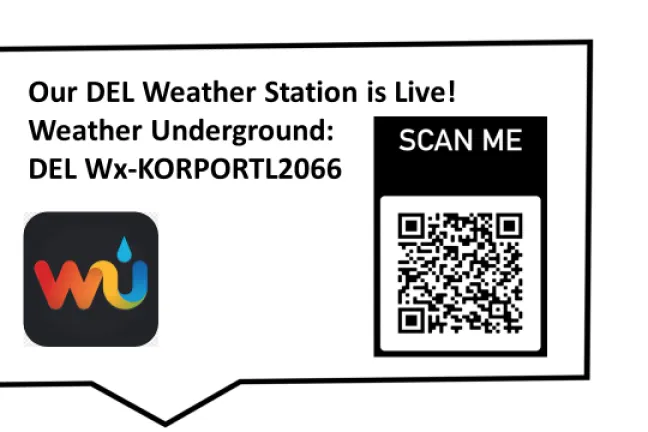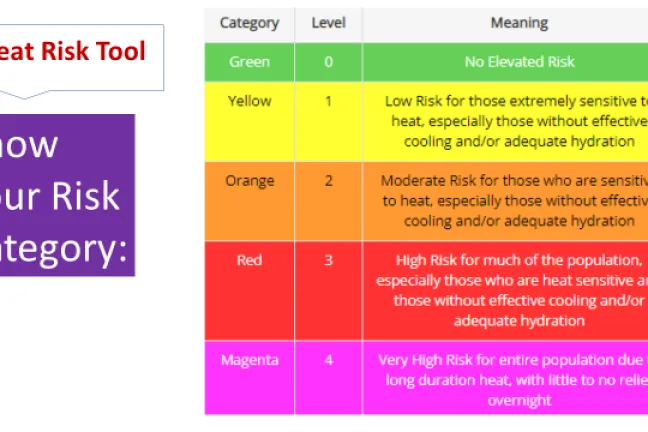As severe weather events and the impacts of climate change pile up in the Pacific Northwest, youth at the Donald E. Long Detention Center in Northeast Portland are serving an important role in helping the community respond.
The youth – serving as certified NOAA Weather-Ready Nation Ambassadors – provide critical information by taking weather measurements and making other observations that they then provide to the National Oceanic and Atmospheric Administration (NOAA), the National Weather Service and NASA.
“It’s not just something that anyone can sign up to do,” said Jennifer Hastings, a Multnomah Education Service District science teacher. “You must be chosen and prove you have the skill and ability to do the program. It’s what I’ve integrated into our school and curriculum here at Donald E. Long Detention Center.”
The students are part of the Community Collaborative Rain, Hail & Snow Network, or CoCoRaHS Network – a group of science-inclined volunteers from all backgrounds who help measure and map precipitation, like rain, hail and snow, in their communities. From Donald E. Long’s recreation center, the ambassadors collect rain data, and they check temperatures, humidity levels, wind direction and wind speeds.
They also provide cloud pattern observations and even take pictures of the skies — north, south, east and west. They submit that information to the CoCoRaHS Network, and their findings are immediately uploaded.
“That goes straight to the National Weather Service,” said Hastings. “They pull from it, and it helps them with their reports or if they want to do storm alerts, flash flood alerts as well as long term seasonal drought data and climate change.”
NASA receives their photos and cloud observations, and compares them to ground observations; and sends back a report verifying the data submitted and its accuracy.
“It makes it really relatable to them,” said Hastings. “The letters come back from NASA with their observations on them, and we show them in the classroom and they’re like, ‘No, you’re joking,’ and I say, ‘This is your data’ and by having the pictures, when they see them on there, that’s the moment they get it and they’re hooked.”
The program is part of overall efforts by Multnomah County’s Juvenile Services Division, the Multnomah Education Service District and many others to bring more prosocial, skill-building and academic initiatives to youth involved in the juvenile justice system. The project incorporates Science, Technology, Engineering and Mathematics (STEM) and writing principles. The students can earn high school credit for participation.
“We try to do things that are evidence-based, where we actually give kids the tools and skills so they can change and have that opportunity while they’re here, so they can do better on the outside, so they don’t keep coming back,” said Karie Will, a juvenile custody services specialist and an evidence-based practice lead at Multnomah County’s Juvenile Services Division.
Even if the youth don’t understand all of the broader concepts at first, they’re enthused about it, said Kenny Sparks, a juvenile custody services specialist who works closely with youth in detention. “They’re learning something new. They’re energetic. They’re going outside and studying the rain gauge.”
“They know how our actions affect the environment,” said Bladimir Cadena, a juvenile custody services specialist. “Ms. Hastings has done a lot on different parts of weather and mother nature, like hurricanes and volcanoes.”
Since the program’s launch last year, it has expanded to include a new professional, top-of-the-line weather station mounted atop the detention center. The station feeds live weather information, including temperature, precipitation humidity, barometric pressure, wind speed and direction, solar radiation, UV exposure, and soon, air quality information to the detention center classroom and the National Weather Service.
The data is visible to the public and used by federal and local agencies.
“Anybody can log into and set up a free WeatherLink account and see the data,” said Hastings. “The youth went a step further by establishing a QR code for staff to access.
Staff can walk by and take a picture of the QR code, and it goes straight to the Weather Underground.”
The students also share weather and heat advisory information, in English and Spanish.
“Part of our duty is to share the weather warnings and messages for what’s going on if there’s an emergency event or extreme weather event and get the information into the hands of locals and community members who may not have that information or understand what the risk or how to access local resources,” Hastings said.
Their work earns them not only high school credit but also recognition and appreciation certificates from the National Weather Service.
“It’s not just an award for participating,” Hastings said. “They must show that they can read the gauge and consistently participate, so this is actually really special to them.”
“Everyone in their life, I don’t care who you are or where you are, you need to make meaningful contributions in your life, to the greater good or greater society,'' said Todd Nicholson, Multnomah Education Service District principal. “So being able to leverage this weather program and also use it as writing activities, science activities, math activities – it really gives students that notion of a life outside of the facility here.”
“NOAA, NASA and CoCoRaHS have shared their gratitude specifically for these students here at the Donald E. Long Detention Center and have recognized their contributions as scientists publicly through NOAA and through our class twitter where we tweet out updates as they happen,” said Hastings.
“The youth begin to see themselves as the young scientist they are,” she said. “It is their generation who will become our future geo-engineers that will contribute significantly to solving climate change.”
Follow Hastings and the student's updates on TWITTER: @Alt_ed_olgy
Quotes from youth:
“I like science and I'm learning a bunch about how the weather works instead of just using my phone. If I can become a teacher one day, I can tell students why we are learning about this, how the atmosphere works, and how we interact with it.”
“People always judge us that we’re here, but they don’t know that behind the scenes we are helping the community. We're doing much more than just learning about weather and getting our credits in science and math, we are also earning a real certification that shows we are able to identify dangerous weather hazards, and that we know how to collect and report the weather data for the National Weather Service."
###



